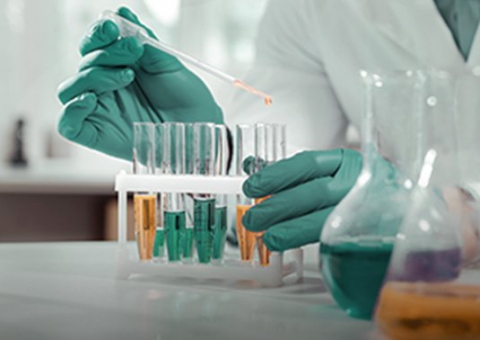Antrodia cinnamomea
22
2023
Sep
What is Antrodia cinnamomea? Who is recommended to use it?
What is Antrodia cinnamomea?
Antrodia cinnamomea, also known as "Cinnamomum antrodia", "Beefsteak Polypore", "Antrodia Mushroom", "Red Antrodia Cinnamomea", "Yin Yang Polypore", and other names, is a unique edible fungus native to Taiwan, often referred to as the "Forest Ruby."
The history of the earliest discovery and use of Antrodia cinnamomea cannot be precisely traced, but there are documented records. As early as 1773, a Chinese medicine practitioner named Wu Sha, who immigrated to Taiwan, observed that the indigenous people of Taiwan used Antrodia cinnamomea to alleviate discomfort in the body. It was typically consumed after experiencing fatigue, thirst, or alcohol consumption.
Regarding research on the edible fungus Antrodia cinnamomea, there have been over 200 published international journal articles and nearly 300 Taiwanese master's theses related to Antrodia cinnamomea. The research covers various effects such as adjusting constitution, nourishing and strengthening the body, health maintenance, post-illness recovery, metabolism enhancement, mental vitality, and more. This indicates that Antrodia cinnamomea, with its unique properties, is not only widely researched and applied in Taiwan, but is also gradually gaining recognition internationally.
Even in modern times, Antrodia cinnamomea continues to be used as a popular health supplement ingredient and is favored by the people of Taiwan.
What are the sources of Antrodia cinnamomea?
Wild Antrodia cinnamomea can only grow as a parasite on the specific endangered species, Cinnamomum kanehirae Hayata. It takes over two years for the Antrodia cinnamomea fruiting body to start forming, and the growth conditions and thresholds are extremely demanding. This has led to an extremely limited quantity of Antrodia cinnamomea in the early stages, making it costly to obtain.
As time has progressed and technology has advanced, the channels for obtaining Antrodia cinnamomea have become more diverse. The most common channels for obtaining Antrodia cinnamomea include wild harvesting, cultivation on oak wood, solid-state fermentation, and liquid-state fermentation.
What are the differences between Antrodia cinnamomea and Ganoderma lucidum?
Antrodia cinnamomea shares a similar appearance and growing environment with Ganoderma lucidum (commonly known as Lingzhi or Reishi). In the early stages, it was indeed considered a type of Ganoderma. However, research has confirmed that Antrodia cinnamomea and Ganoderma lucidum are distinct species.
What are the benefits of Antrodia cinnamomea?
Antrodia cinnamomea has been widely used in traditional practices for many years. In modern times, various effective components have been identified in Antrodia cinnamomea. It serves as a modern nutritional supplement that helps regulate the constitution, promote metabolism, nourish and strengthen the body, enhance physical fitness, and keep you energetically healthy.
Who is Antrodia cinnamomea suitable for?
Busy office workers, night owls
The regulatory and physiological effects of Antrodia cinnamomea are quite helpful for those who frequently work overtime, stay up late, have irregular eating habits, feel mentally fatigued, and have many red flags in their health check-ups. This is especially crucial in work environments where socializing and drinking are common, making Antrodia cinnamomea essential for maintaining physical well-being.
Health-conscious seniors
Antrodia cinnamomea is also suitable for older individuals and seniors. As the body's natural defenses tend to weaken with age, Antrodia cinnamomea provides nutritional support, enhancing protection for the elderly and strengthening their physical and mental vitality.
Is Antrodia cinnamomea safe to consume?
Antrodia cinnamomea has a long history of consumption, and Taiwan's extraction and technology in this regard are highly reputable internationally. In Taiwan, some cultivators have successfully harnessed adverse environmental conditions to cultivate solid-state Antrodia cinnamomea mycelium with triterpenoid components comparable to wild Antrodia cinnamomea. This product is also the only new dietary ingredient (NDI) of Antrodia cinnamomea that has received certification from the U.S. FDA in the international Antrodia cinnamomea industry. Choosing Antrodia cinnamomea with FDA safety certification provides an additional level of assurance regarding its safety.
Related product information:
Antromax® Antrodia cinnamomea mycelia
Antrodia cinnamomea, also known as "Cinnamomum antrodia", "Beefsteak Polypore", "Antrodia Mushroom", "Red Antrodia Cinnamomea", "Yin Yang Polypore", and other names, is a unique edible fungus native to Taiwan, often referred to as the "Forest Ruby."
The history of the earliest discovery and use of Antrodia cinnamomea cannot be precisely traced, but there are documented records. As early as 1773, a Chinese medicine practitioner named Wu Sha, who immigrated to Taiwan, observed that the indigenous people of Taiwan used Antrodia cinnamomea to alleviate discomfort in the body. It was typically consumed after experiencing fatigue, thirst, or alcohol consumption.
Regarding research on the edible fungus Antrodia cinnamomea, there have been over 200 published international journal articles and nearly 300 Taiwanese master's theses related to Antrodia cinnamomea. The research covers various effects such as adjusting constitution, nourishing and strengthening the body, health maintenance, post-illness recovery, metabolism enhancement, mental vitality, and more. This indicates that Antrodia cinnamomea, with its unique properties, is not only widely researched and applied in Taiwan, but is also gradually gaining recognition internationally.
Even in modern times, Antrodia cinnamomea continues to be used as a popular health supplement ingredient and is favored by the people of Taiwan.
What are the sources of Antrodia cinnamomea?
Wild Antrodia cinnamomea can only grow as a parasite on the specific endangered species, Cinnamomum kanehirae Hayata. It takes over two years for the Antrodia cinnamomea fruiting body to start forming, and the growth conditions and thresholds are extremely demanding. This has led to an extremely limited quantity of Antrodia cinnamomea in the early stages, making it costly to obtain.
As time has progressed and technology has advanced, the channels for obtaining Antrodia cinnamomea have become more diverse. The most common channels for obtaining Antrodia cinnamomea include wild harvesting, cultivation on oak wood, solid-state fermentation, and liquid-state fermentation.
| Wild A. cinnamomea | Oak wood cultivation A. cinnamomea | Solid-state cultivation A. cinnamomea | Liquid fermentation A. cinnamomea | |
| Incubation time | Very long, 3-5 years | Very long, 3-5 years |
Long, 90-120 days | Very short, 7-14 days |
| Ingredient | Triterpenoids and other active ingredients are both abundant. | Triterpenoids and other active ingredients are both abundant. | Abundant triterpenoids, polysaccharides, SOD, and adenosine. | Negligible triterpenoids, if any, primarily polysaccharides. |
| Cost | Very expensive (millions of dollars) | Expensive (hundreds of thousands) | Affordable | Affordable |
| Food safety |
|
|
|
|
| Characterization | Safety in doubt | Highest cost-performance ratio. | Low active ingredients | |
What are the differences between Antrodia cinnamomea and Ganoderma lucidum?
Antrodia cinnamomea shares a similar appearance and growing environment with Ganoderma lucidum (commonly known as Lingzhi or Reishi). In the early stages, it was indeed considered a type of Ganoderma. However, research has confirmed that Antrodia cinnamomea and Ganoderma lucidum are distinct species.
| Antrodia Cinnamomea | Ganoderma Lucidium | |
| Scientific name | Antrodia Camphorata | Ganoderma Iucidium |
| Categories | Polyporaceae, Antrodia, Antrodia cinnamomea. | Polyporaceae, Ganoderma, Ganoderma lucidum. |
| Smell | Aromatic, pungent | Bitter |
| Appearance | Has a symbiotic relationship with Cinnamomum kanehirae Hayata and is stemless. | Saprophytic fungus, with a stem, and the cap of the fungus is glossy. |
| Can be flat, bell-shaped, horseshoe-shaped, or tower-shaped, and so on. | Upper part is brown, and the spores only adhere below the cap. | |
| Active ingredient | Ganoderma polysaccharides, triterpenoids, adenosine, SOD (Superoxide Dismutase), sterols. | Ganoderma polysaccharides, triterpenoids, adenosine, proteins. |
| Triterpenoids | High content and more than 200 types (the most abundant of all mushrooms). | Ganoderma polysaccharides, triterpenoids, adenosine, proteins. |
| Triterpenoid contain | 10%~30% | 1%~3% |
| Polysaccharides | Yes | Yes |
| Place of origin | Taiwan only | Mainly grown in Asia, with China, South Korea, and Japan being the largest producers. |
What are the benefits of Antrodia cinnamomea?
Antrodia cinnamomea has been widely used in traditional practices for many years. In modern times, various effective components have been identified in Antrodia cinnamomea. It serves as a modern nutritional supplement that helps regulate the constitution, promote metabolism, nourish and strengthen the body, enhance physical fitness, and keep you energetically healthy.
Who is Antrodia cinnamomea suitable for?
Busy office workers, night owls
The regulatory and physiological effects of Antrodia cinnamomea are quite helpful for those who frequently work overtime, stay up late, have irregular eating habits, feel mentally fatigued, and have many red flags in their health check-ups. This is especially crucial in work environments where socializing and drinking are common, making Antrodia cinnamomea essential for maintaining physical well-being.
Health-conscious seniors
Antrodia cinnamomea is also suitable for older individuals and seniors. As the body's natural defenses tend to weaken with age, Antrodia cinnamomea provides nutritional support, enhancing protection for the elderly and strengthening their physical and mental vitality.
Is Antrodia cinnamomea safe to consume?
Antrodia cinnamomea has a long history of consumption, and Taiwan's extraction and technology in this regard are highly reputable internationally. In Taiwan, some cultivators have successfully harnessed adverse environmental conditions to cultivate solid-state Antrodia cinnamomea mycelium with triterpenoid components comparable to wild Antrodia cinnamomea. This product is also the only new dietary ingredient (NDI) of Antrodia cinnamomea that has received certification from the U.S. FDA in the international Antrodia cinnamomea industry. Choosing Antrodia cinnamomea with FDA safety certification provides an additional level of assurance regarding its safety.
Related product information:
Antromax® Antrodia cinnamomea mycelia








